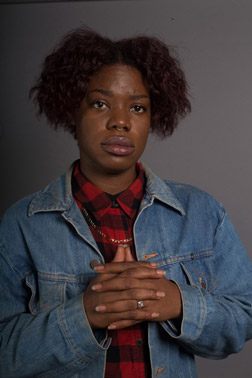
CCAD Stories: Erica Rodney takes on fashion
Influencers | What she's listening to | Military to MFA | Making the invisible visible

Erica Rodney (Fashion Design, 2016; MFA, 2018) is an artist and a fighter.
The first-year Master of Fine Arts student has always loved art.
“I was always drawing. I was always curious,” said Rodney, who is originally from the island of Saint Croix, part of the U.S. Virgin Islands.
As a little girl, Rodney made clothes for her Barbie dolls. Her mother had a big vision for what she would do next.
“My mom was a big influence on molding my mind. She would tell us these dreams, like, ’Oh, Erica, I had a dream that you made all of these amazing clothes and people love you,’” Rodney said.
Later, her high school art teacher, Anselm Richards, encouraged her to check out Columbus College of Art & Design. “I had some friends who were attending CCAD and they would just say how awesome and cool the school is, and that Columbus is nice. … I still applied to different schools, but in my head, I was like, ’I’m coming to CCAD.’”
After 17 years growing up on an island, arriving at CCAD in 2002 to study Fashion Design “was probably the most exciting time of my life. … It was a whole new world,” Rodney said.
In 2007, though, she left.
“My journey in undergrad was very tough. It was rocky. I had some really bumpy roads,” Rodney remembered. Her mother had just relocated to the continental U.S., and one of her brothers, still in the islands, was supposed to join Rodney in Columbus but was murdered before he could arrive.
“By the time I got to be a senior, it was just really rough for me and I dropped out,” Rodney, who is one of 15 children, said. “I was like, ’I’ll be back in a semester or a year to finish out my degree,’ and it was just tougher than I thought it was going to be.”
She worked for a couple of years and then decided to make another change. “The only way I could see to figure out to finish my degree was to join the military, so I did,” she said. After five years of service with the U.S. Marine Corps, Rodney returned to CCAD in fall 2015 to finish out her bachelor’s degree in Fashion Design.
“That year flew by and I was like, ’I’m not done learning. I want to learn more. I want to explore more of fashion and art,’” she said. “I wanted to see what else I could do with fashion besides just wearing it for ready to wear or just making clothes just for a single purpose. I wanted to explore more of that because I was really hungry for that.”
“If I have to choose one thing I love about CCAD, I will have to say the faculty. The people at CCAD chose to teach us art and to teach us to be better artists and human beings,” Rodney said.
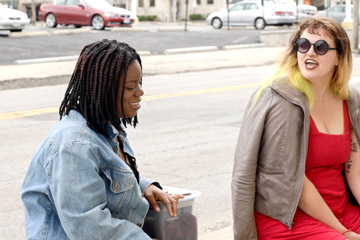
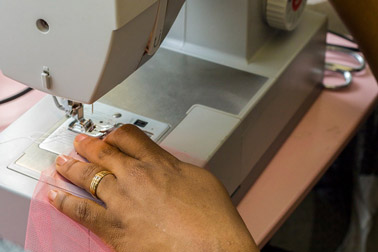

While Rodney has been through hard times, she wants people to know that she’s a fighter. “I push through things all the time,” she said. “I share that in hopes of helping people going through tough times, too, understand that it will pass.”
She’s excited about the prospect of earning her MFA next year — “it’s fulfilling to reap the fruit of your hard work,” Rodney said, adding, “I think I’ll be happy for my achievement, but part of me really thinks I’ll still be hungry for more learning and searching.”
Ultimately, she said, “I want to make art that helps people."
For Rodney, that's particularly meant pursuing sustainable designs and “slow fashion,” and to encourage people to better understand how their clothes are made — and who is making them
“In that sense, I want to make clothes that could maybe transcend time,” she said.
Photos by Jamilla Kato for CCAD Student Agency
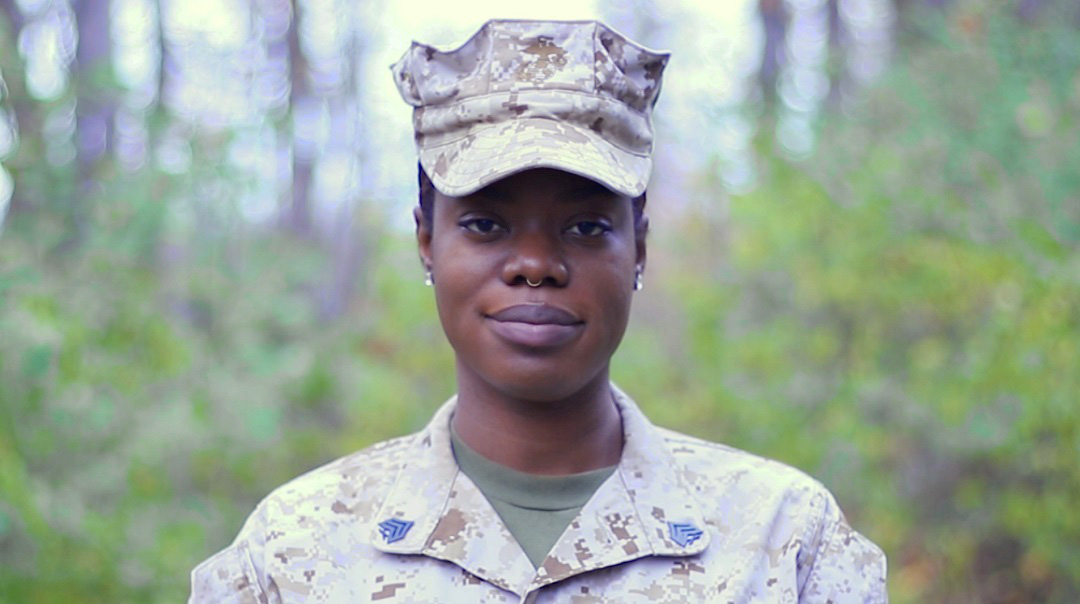
On the surface, a military career and a life as an artist might seem incompatible. But for Erica Rodney (Fashion Design, 2016; MFA, 2018), it’s been a perfect fit.
Rodney, a first-year Master of Fine Arts student at Columbus College of Art & Design, left CCAD in 2007 — and, two years later, joined the U.S. Marine Corps — after a turbulent time in her life.
Rodney, one of 15 children, lost a brother to violence. Meanwhile, the job she’d had, working in research and design for a central Ohio fashion company, had been eliminated in the wake of the national economic downturn.
“So I was like, OK, I want something stable, and I want to finish my degree,” she said.
The military, with its offer of financial support for college, beckoned, and eventually, the Marines proved to be right for her.
“They pay for your education; they pay for your housing while you go to school, so it was a great deal,” she said.
Rodney went through the rigors of boot camp in Parris Island, South Carolina; combat training at Camp Lejune, North Carolina; and eventually to Camp Pendleton, California.
All the while, she found ways to create art, designing a company T-shirt for her battalion, making several battalion programs for retiring Marines, and creating a program for the Marine Corps Annual Ball — earning her a letter of appreciation — which helped her advance more quickly in the ranks.
Rodney’s skills also provided her access she wouldn’t have otherwise had. “I got to work with people way above my rank,” she said.
Not that it was all sunshine and rainbows.
The difference in being an artist “made me stand out,” Rodney said. Artists, Rodney included, are expressive, and in the Marines, conformity is key — “so it’s walking that tightrope,” she said.
And, at age 26, she was older than many of her peers in the Marines, some of whom had joined directly from high school. That developmental difference helped her stay grounded when the going got tough.
“When I got yelled at (in boot camp), I knew it was for a purpose and for a limited time. … I was so goal-oriented, which made it a lot easier,” she said.
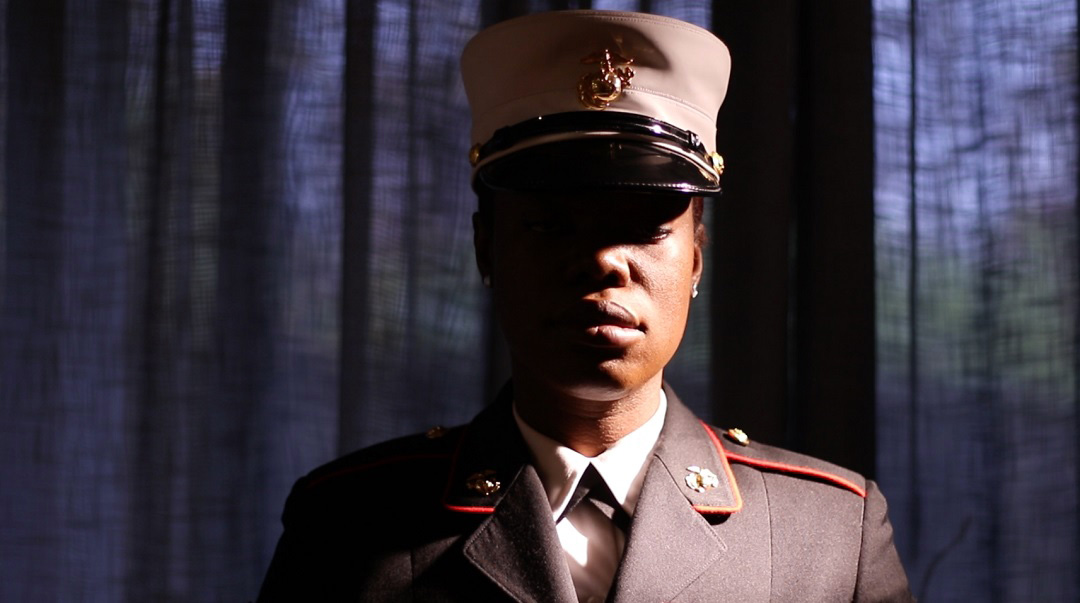

Rodney was chosen to be part of the Marine Expeditionary Unit’s Female Engagement Team.
Women make up about 7% of the Marines, and the Female Engagement Teams are intended to serve as a means for the military to communicate with women and families in the Middle East without breaking cultural taboos. Rodney trained for six months as one of a 40-member team who were set to replace soldiers already serving in Afghanistan. They hiked with 80-pound packs, mastered weapons such as the M16 rifle and M9 Beretta, received language and cultural instruction, and spent a full month training in the desert.
In the field, “that artist’s eye helps you see better,” Rodney said. For instance, one training had soldiers looking for abnormalities in the terrain. “So, just being an artist or having that eye, I always won that game.”
When an issue with her paperwork prevented Rodney from deploying with her team, “it felt terrible,” Rodney said. “I felt crushed.”
But, she said, “I guess it worked out.”
She met Andrew Rodney, a fellow member of the U.S. Marine Corps, when she returned to her unit. The two married and moved to Ohio, and Rodney, who is a sergeant in the U.S. Marines Corps Reserves until 2018, left active duty.
At her mother’s advice, she applied to complete her senior year at CCAD. To her delight, Rodney not only got in, she got a scholarship.
“I couldn’t wait,” Rodney said. “I was waiting seven years to finish my degree. I signed up for the military just to get it. I was definitely happy and excited to come back to CCAD. ... And it’s been much more than I expected I have to say. I came back and people remembered me, the professors remembered me, and they made me feel welcomed, and they motivated me. It was just really; it was a really emotional time coming back to CCAD.”
And while her time in the U.S. Marines was a challenge like none other, it has benefitted her as she navigates college.
“CCAD’s a tough school, and if you want to excel at this school, you really need time management, and that’s one thing I definitely got in the military, how to manage time,” Rodney said.
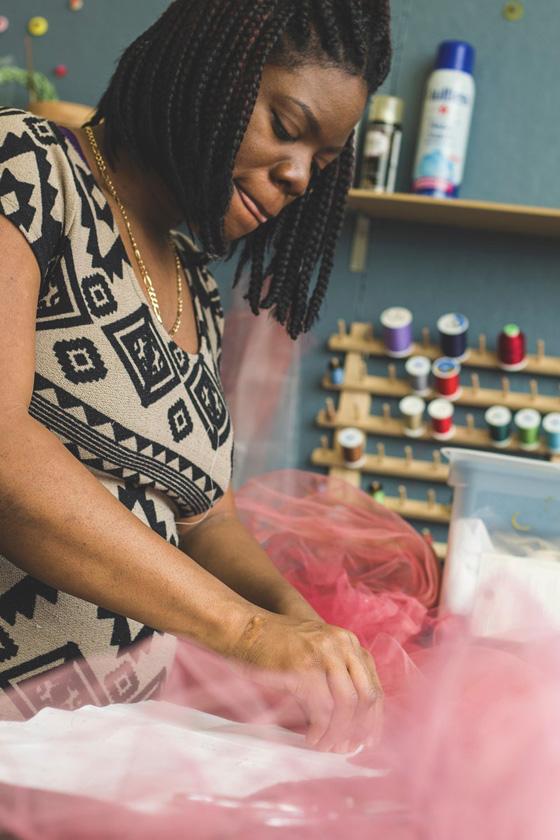
Thanks to her experience in the service, “I know how to push through pain and things like, ’Oh, I’m tired.’ You can’t be tired in the Marines. They’re like, ’Oh, are you tired? I’ll make you even more tired.’ All of the things I used to pick at and make excuses for myself, I no longer care to use those excuses,” she said.
Working with Fashion Design Chair and Associate Professor Suzanne Cotton was especially gratifying. “She’s amazing,” Rodney said. “I learned so much in one year, and when I was done, I was like, ’That’s it?’ I wanted to learn more, I wanted to do more.”
So she applied and was accepted into CCAD’s Master of Fine Arts degree program.
Now, as a graduate student, Rodney said, “I’m challenging myself. … After all the military (training), I couldn’t see myself doing it any other way. I couldn’t come back and make a simple dress.”
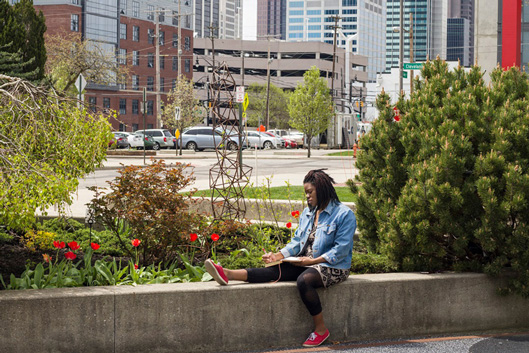
Photos by Jamilla Kato, Shanice Linton, and Darrin Faires for CCAD Student Agency
Erica Rodney's Top 6 Creative Influencers:
Jean Paul Gaultier, fashion designer | Instagram | Twitter | Facebook
People on the street ("If our minds are opened enough, then everything and everyone becomes an influencer.")
Junya Watanabe, fashion designer
Alexander McQueen, fashion designer
Gareth Pugh, fashion designer | Instagram | Twitter
Music ("Yes, music. A lot of times I take what I hear and turn that I something I can see, and then that into something I can call art.")
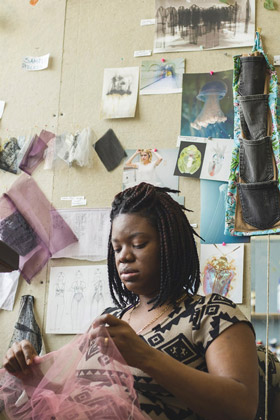
Erica Rodney (Fashion Design, 2016; MFA, 2018) has had a passion for fashion since she was a little girl.
“I made little dolly clothes and I would always sketch out little dolly figures, and just imagine what their hair looked like, and put shoes on them. I was so young, like four, because I remember being in kindergarten and someone asking me to draw them a dolly,” she said.
As an undergrad, Rodney was among the Senior Fashion Show designers whose work was picked to be displayed in window displays at Macy’s Town Center.
Now, as a Master of Fine Arts candidate at Columbus College of Art & Design, Rodney is exploring the opacity of labor in the garment industry by creating ethereal garments with ready-to-wear silhouettes.
“When I decided I wanted to go to grad school, I was like, ’I want to go and make art, but I’m a fashion designer, so I want to make art using my fashion,’” she said.
In the transparent clothes she’s crafting — from a load of tulle she purchased from a yard sale for $10 — “I’m trying to represent the absence of the person who makes our clothes,” Rodney said. “Their ghost. These people, who are minority women, are protesting on their own,” she said. “I was so moved about how they protest.”
A lot of fashion design is all about the customer, and about clothes that can be bought off the rack, she said. “I love that, but it’s unsustainable.”
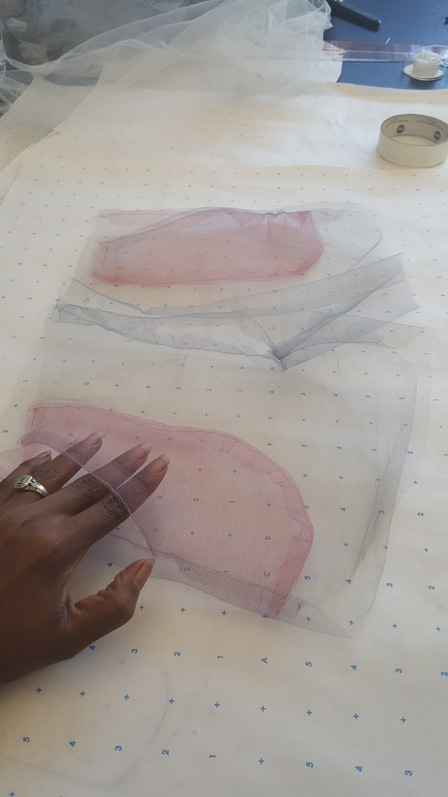
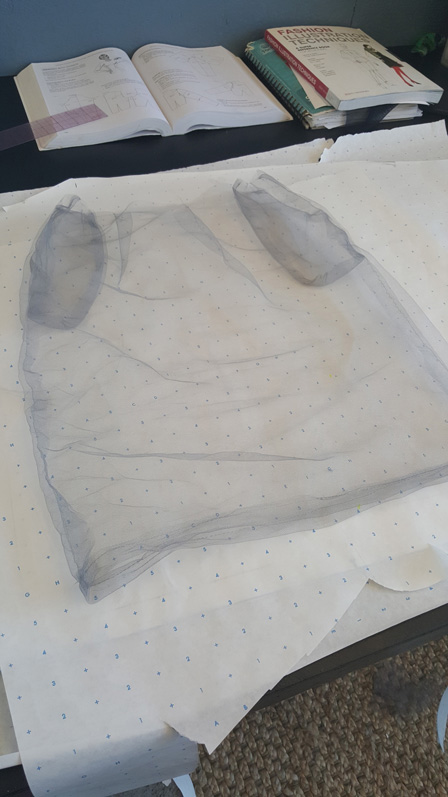
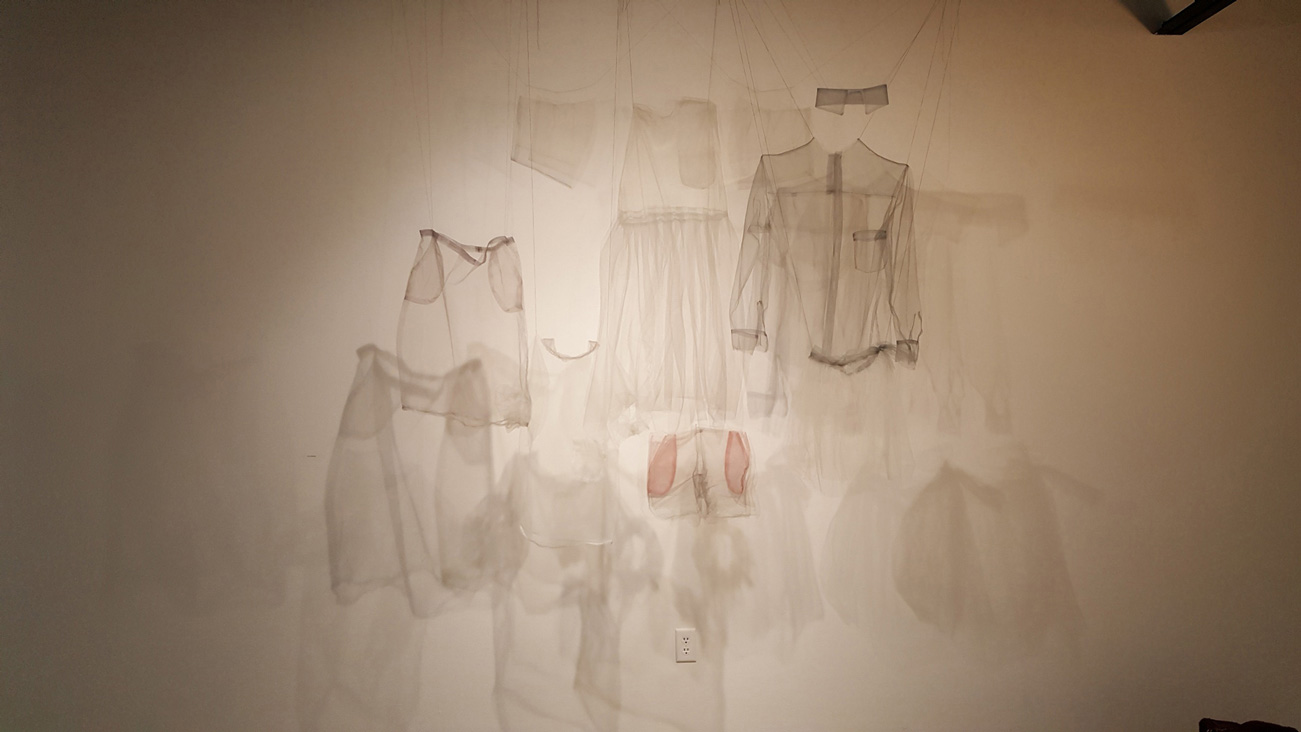
Rodney’s conceptual fashion designs, which were included in a small exhibition, Transparent Industry, that went on view in CCAD’s Acock Gallery in late 2016 as part of an end-of-semester critique, are intended to shine a light on the inhumane conditions and anonymity that so many garment workers labor in.
“I’m trying to make an installation piece that consists of 100-plus garments that is going to have ghost-like imagery. It’s going to be made of thin-to-transparent fabric. … I want it to be a representation of all the garments and people making it that we don’t know of. I wanted to choose a transparency to shine a light on the lack of transparency there is in the fashion industry — and the need for it,” she said.
“The quantity, the large amount of pieces, represents the workload that most people who work in the garment factories have to do. It’s a real crazy workload for almost no pay,” Rodney said,” citing as her inspiration a garment worker in Bangalore who protested poor pay and workload overload.
“She just had a little sign that said, ’I made all of this for $1,’ and she stood next to a rack of clothes, maybe 20 pieces, and in the article about it, she said she makes up to 150 pieces in one hour,” Rodney recalled.
CCAD’s MFA program reaches across the disciplines, and Rodney said her fellow master’s degree candidates have had a significant impact on her artmaking.
“Being in that tight group with all these disciplines that you are always communicating with and working with, and to have others outside of your realm critiquing your work — it’s a big deal. It’s a blessing, it is,” she said. “We live in a society and we are all a product of our environment. Sometimes we get caught up in doing the same thing and getting the same influence from the same perspectives. I’ve been growing a lot … just from having all these new perspectives on my work.”
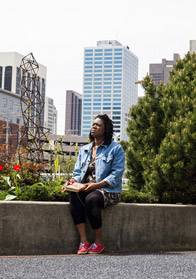
Read more in our series CCAD Stories. Discover more about the CCAD Student Agency. Learn more about CCAD's Fashion Design and Master of Fine Arts programs or apply here.
Post date
April 19, 2017